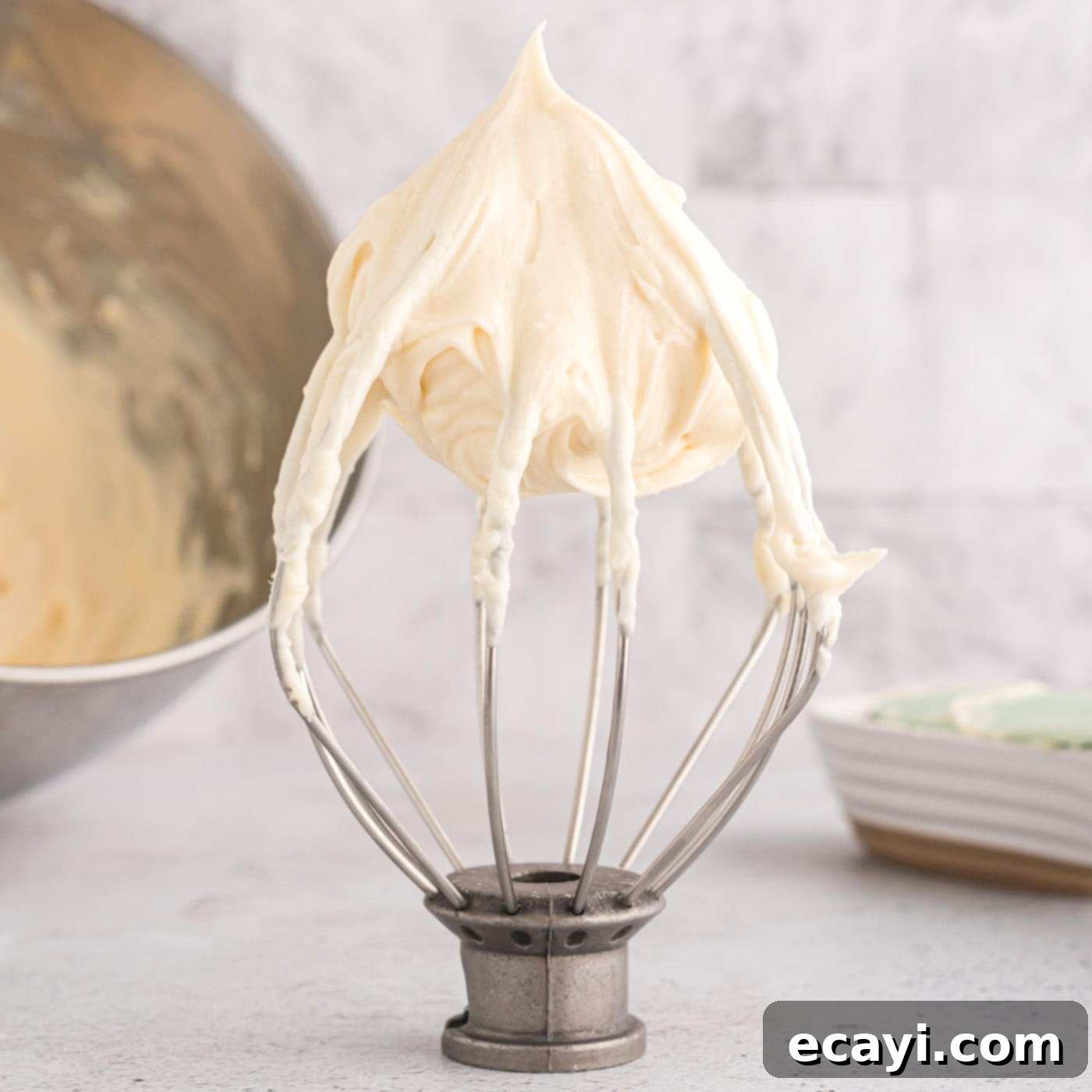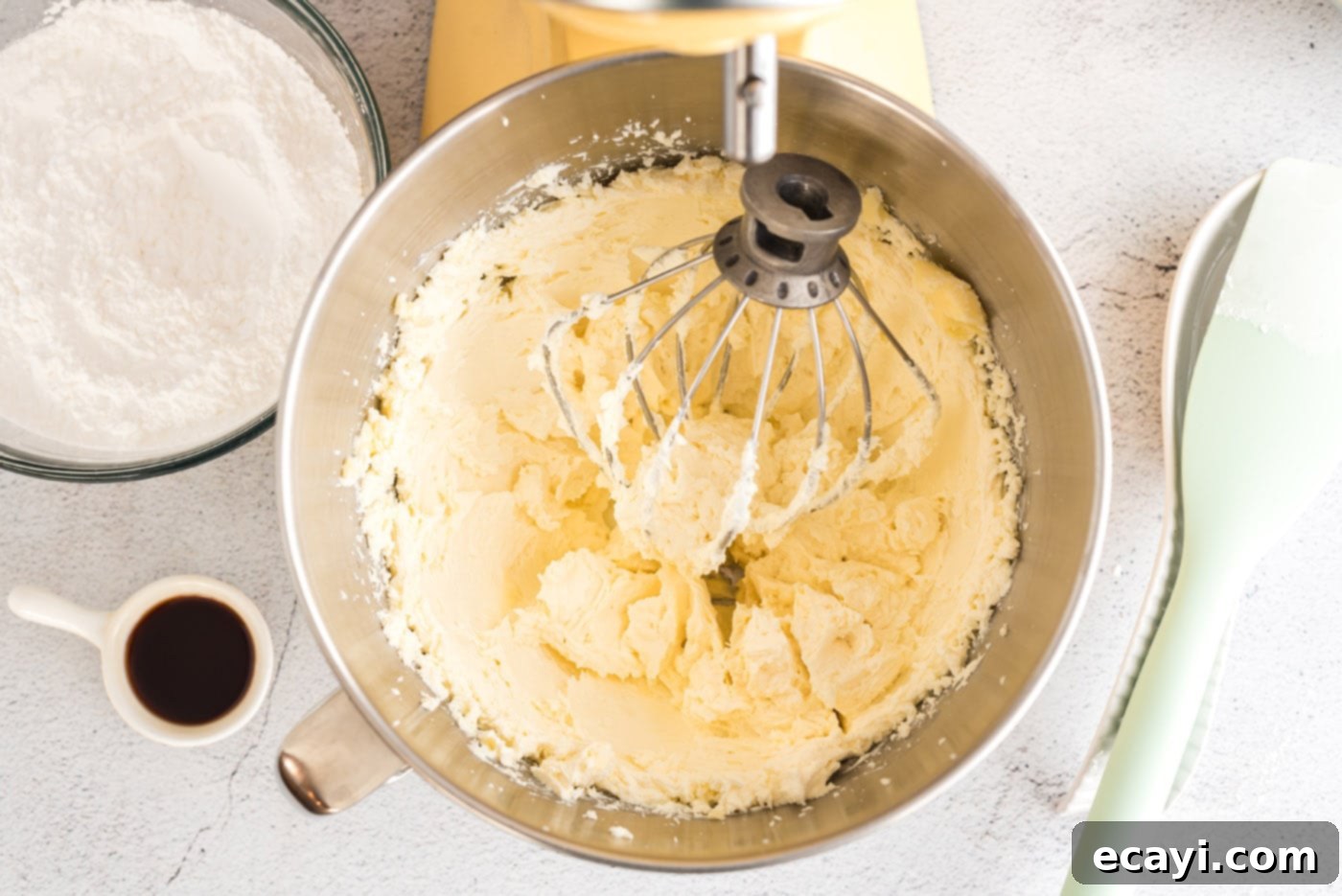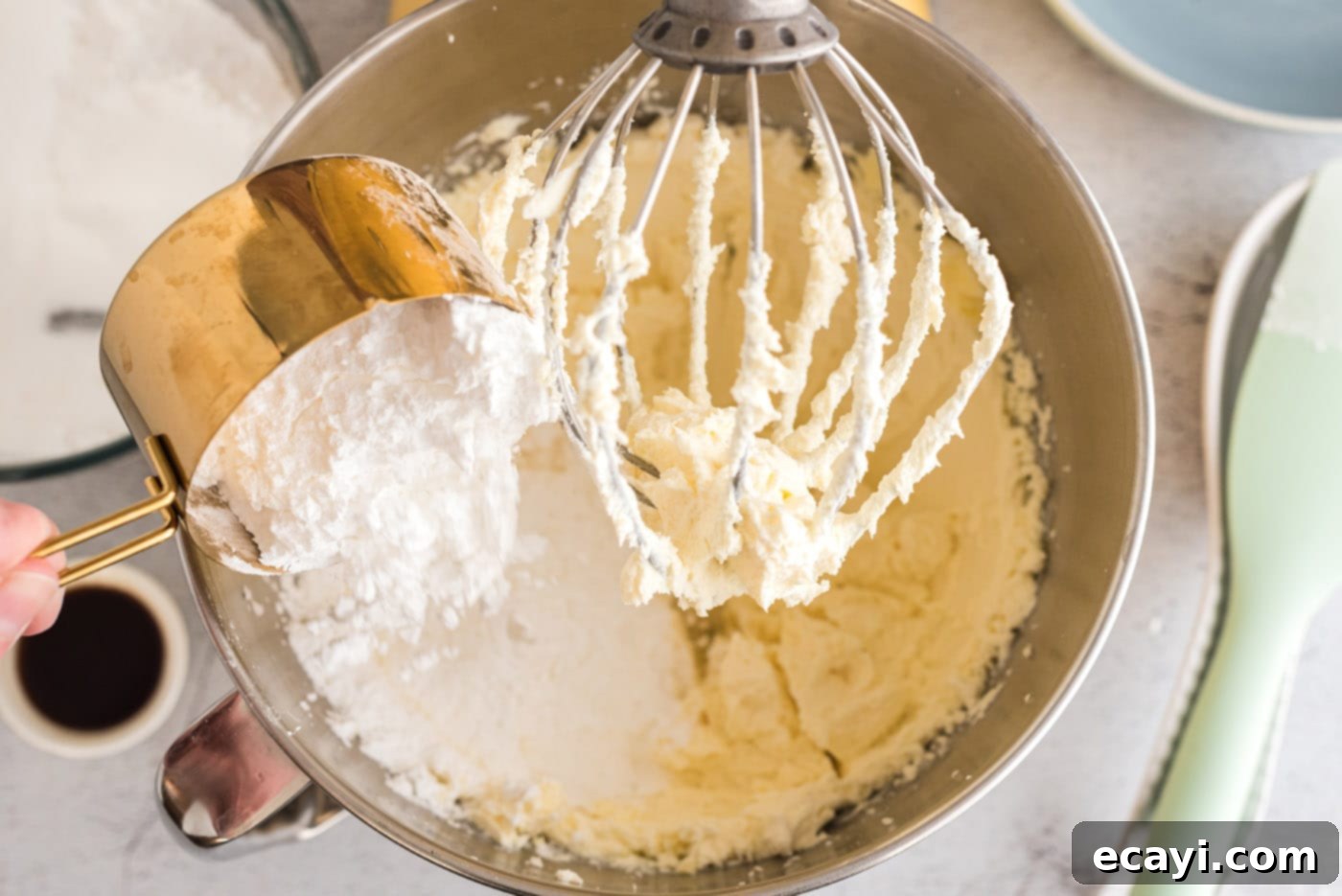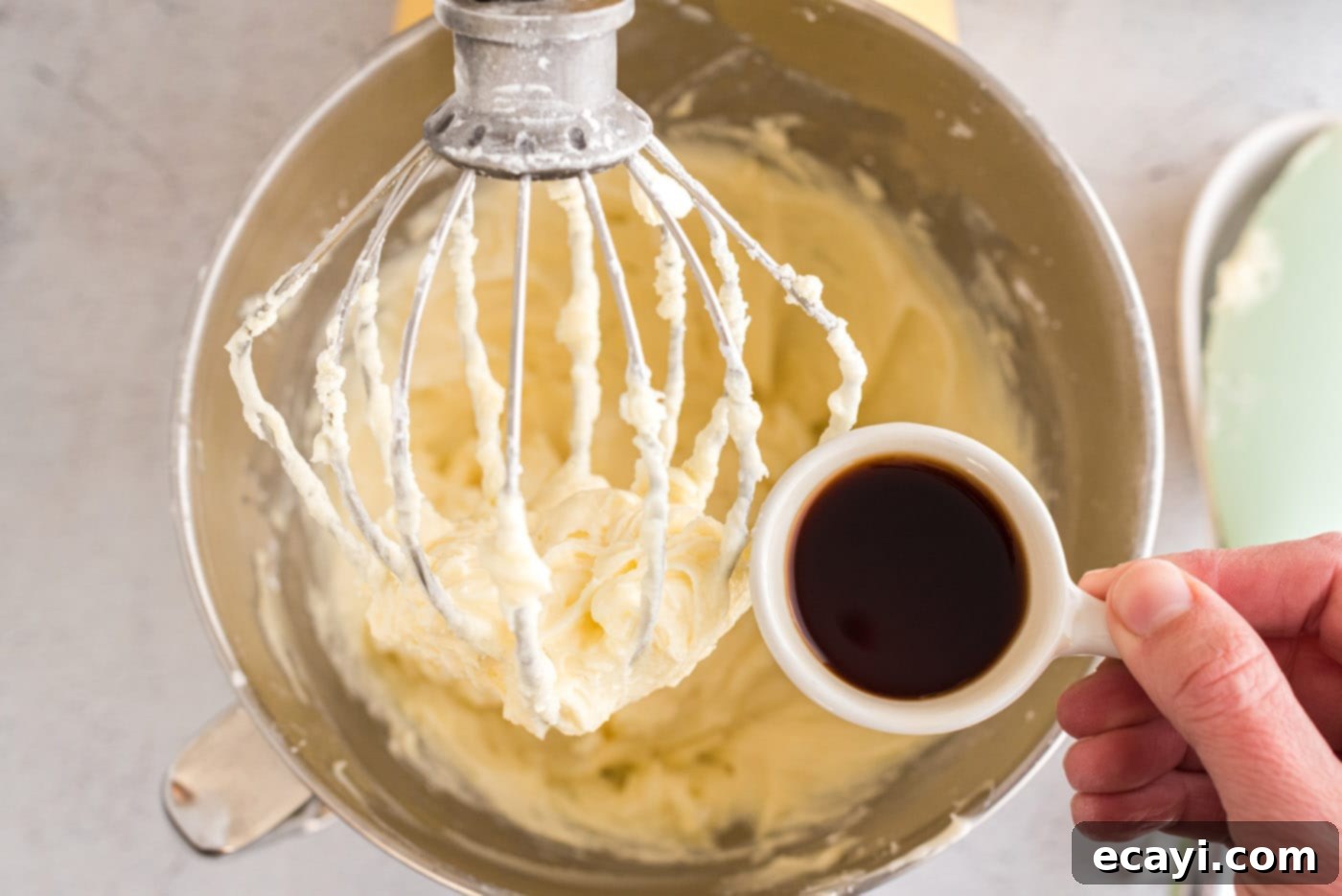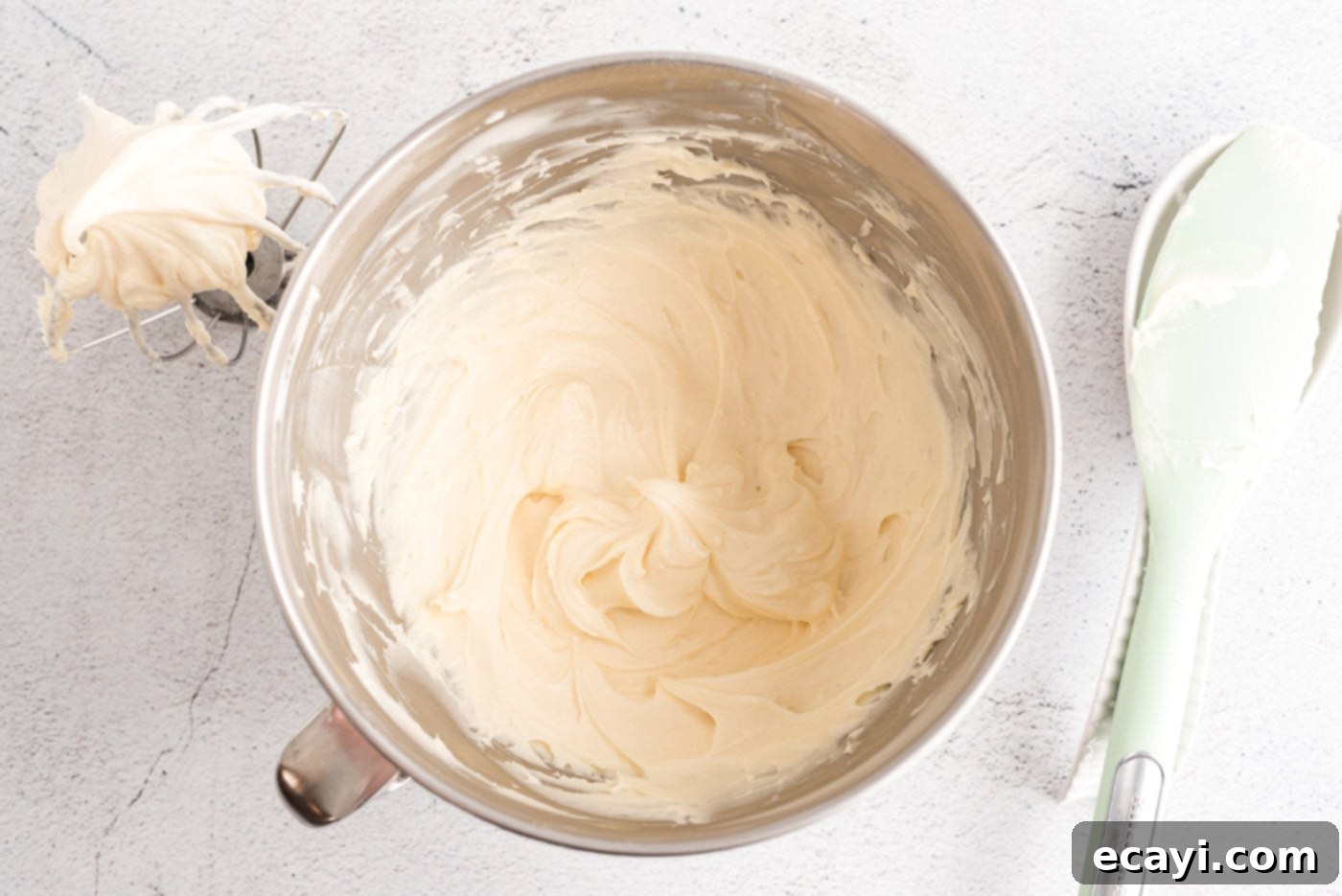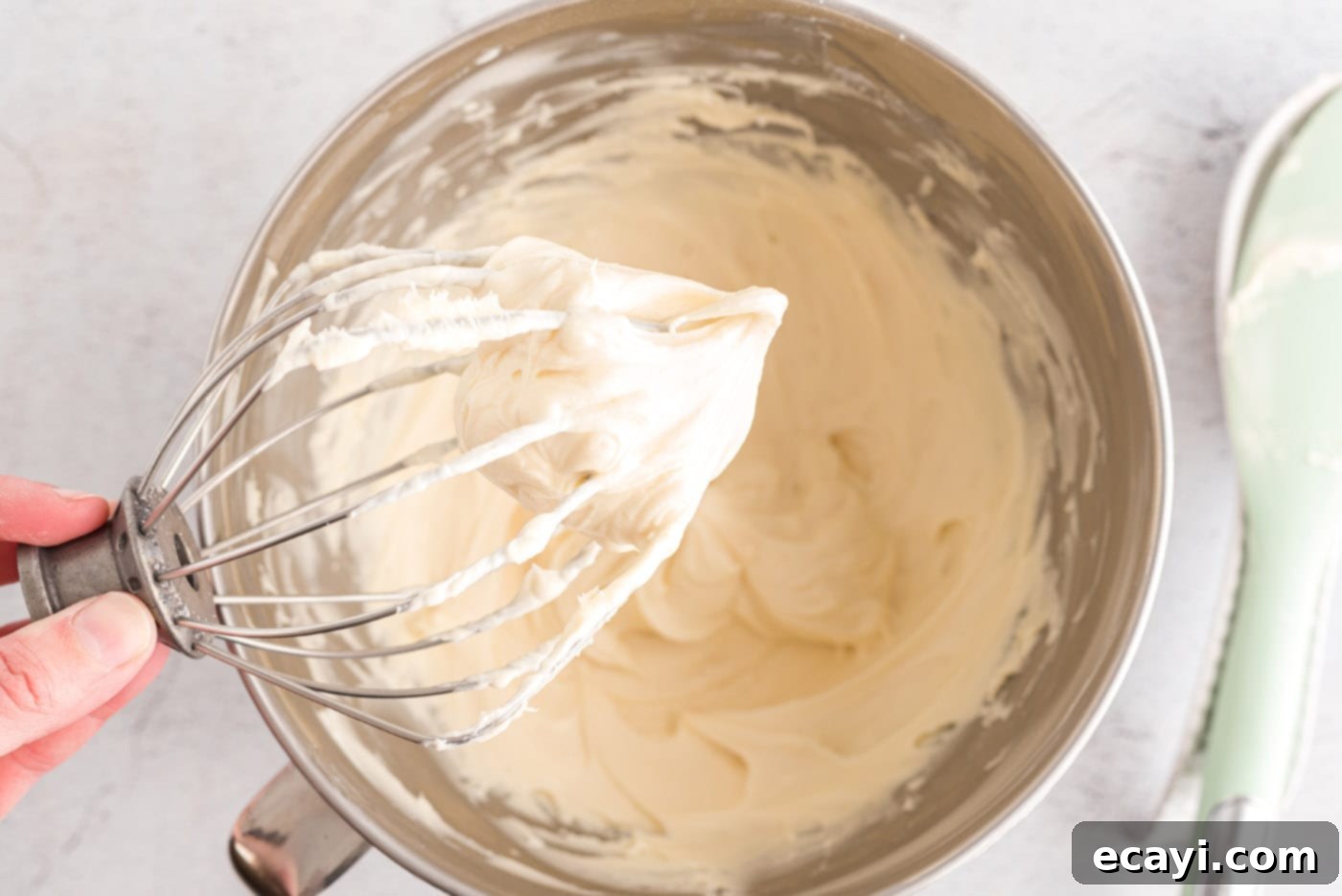The Ultimate Easy 4-Ingredient Cream Cheese Frosting: Velvety Smooth Perfection for Every Dessert
A truly classic cream cheese frosting recipe is an absolute cornerstone for any baking enthusiast’s repertoire. Renowned for its irresistibly creamy texture, rich tangy-sweet flavor, and incredible versatility, this frosting stands out as one of our all-time favorites. It effortlessly complements a vast array of baked goods, transforming them into decadent treats. Whether you’re a seasoned baker or just starting out, mastering this simple yet spectacular recipe will elevate your desserts to new heights. Prepare to fall in love with its velvety smooth consistency and delightful taste that enhances everything it touches.
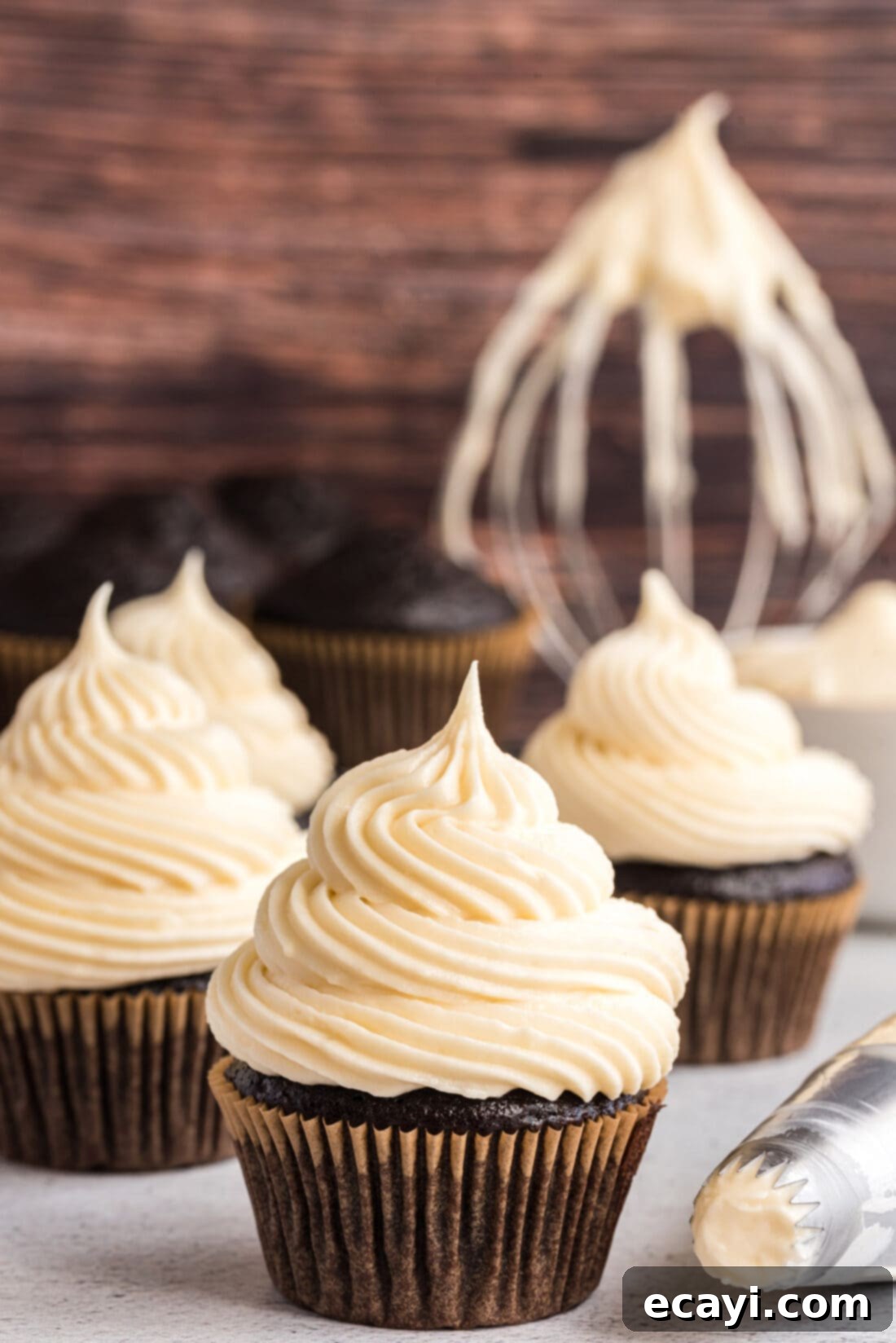
Why This Cream Cheese Frosting Recipe Is Your New Go-To
There’s a reason this particular cream cheese frosting recipe has garnered so much praise and is continually raved about whenever it graces a sweet creation. Its magic lies in its perfect balance of flavor and texture, combined with an astonishing ease of preparation. This isn’t just any frosting; it’s a meticulously perfected formula, inspired directly by our beloved banana cake recipe, ensuring consistent, professional-quality results every time. It’s truly a testament to how simple ingredients can yield extraordinary flavor.
The beauty of homemade cream cheese frosting is its incredible versatility. It pairs harmoniously with virtually any type of cake, cupcake, and cookie you can imagine. From a humble carrot cake to a grand red velvet masterpiece, or even simple sugar cookies, this frosting adds a layer of creamy, velvety smooth, and utterly decadent goodness. Unlike some frostings that can be overly sweet or too stiff, ours strikes the ideal balance, offering a delightful tang that cuts through richness and a light-as-air consistency that’s a dream to work with.
Furthermore, what truly sets this recipe apart is its incredible simplicity. You only need four core ingredients – cream cheese, unsalted butter, powdered sugar (also known as confectioners’ sugar or icing sugar), and pure vanilla extract. With minimal effort and common pantry staples, you can whip up a batch of the most delicious homemade cream cheese frosting in under 10 minutes. This makes it an ideal choice for busy bakers who don’t want to compromise on taste or quality. Say goodbye to store-bought tubs and hello to fresh, flavorful perfection!
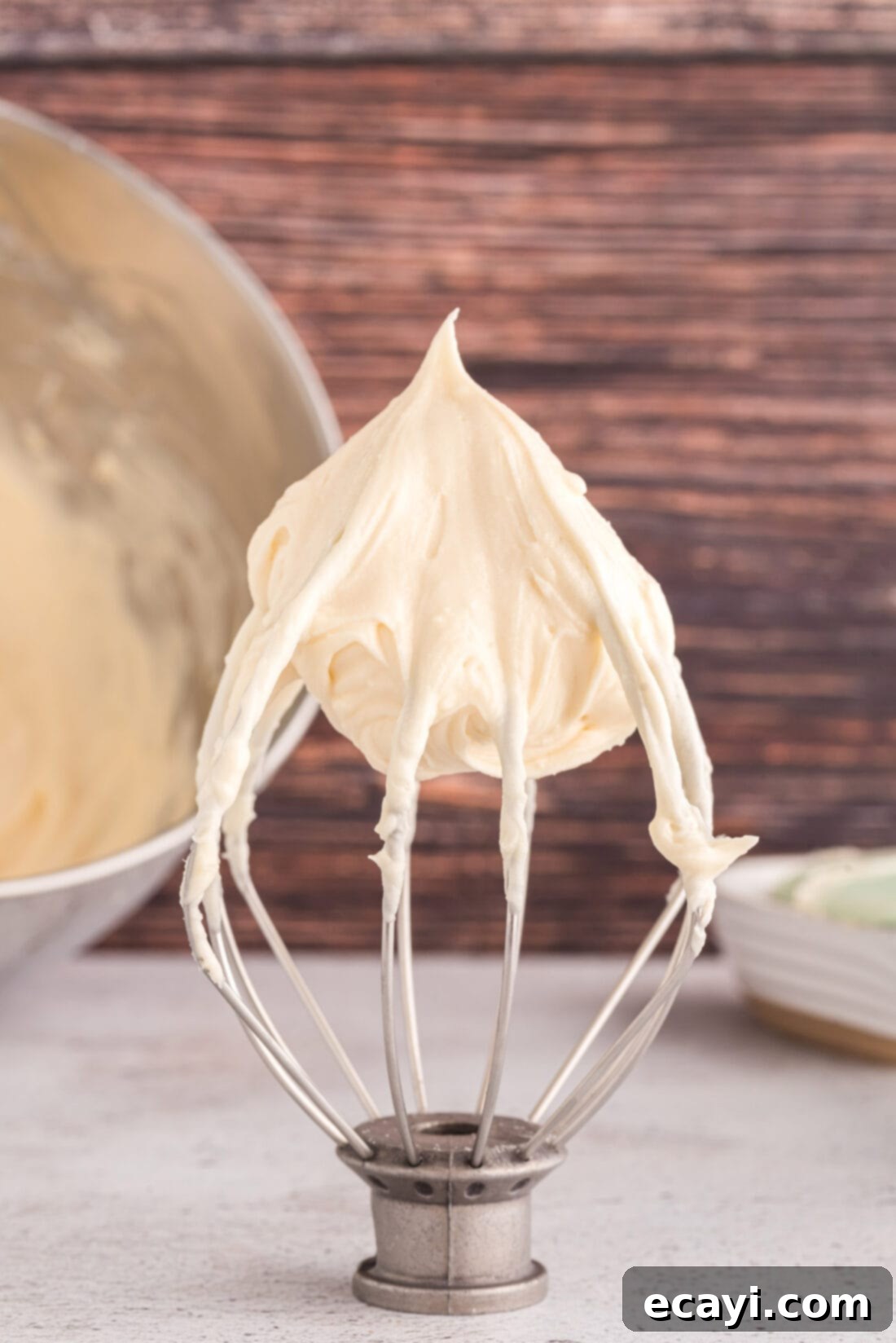
Essential Ingredients for Perfect Cream Cheese Frosting
Crafting the perfect cream cheese frosting begins with understanding the role of each ingredient. While the recipe calls for just four simple components, their quality and preparation are key to achieving that signature smooth, creamy, and flavorful result. You can find all specific measurements and detailed instructions in the printable recipe card located at the very end of this comprehensive guide. Here’s a closer look at what you’ll need and why each one matters:
Cream Cheese: The star of the show! For the best flavor and texture, always opt for full-fat block cream cheese. Avoid whipped or low-fat varieties, as they contain more water and can lead to a runny, less stable frosting. Ensure your cream cheese is softened to room temperature. This is crucial for a lump-free, silky smooth frosting. If it’s too cold, it won’t blend properly with the butter, resulting in a chunky texture. If it’s too warm, the frosting might be too soft.
Unsalted Butter: Butter provides richness and structure. Using unsalted butter allows you to control the overall saltiness of your frosting. Like cream cheese, the butter must be softened to room temperature. This ensures it creams seamlessly with the cream cheese, creating a homogenous base. Overly cold butter will create lumps, while melted or oily butter will make the frosting too greasy and thin.
Powdered Sugar (Confectioners’ Sugar): This is the primary sweetener and thickener. Powdered sugar, also known as icing sugar, has a very fine consistency and contains a small amount of cornstarch, which helps prevent caking and contributes to the frosting’s stability. Always sift your powdered sugar before adding it to the mixture. This step is vital for preventing gritty or lumpy frosting and ensuring a truly velvety texture.
Vanilla Extract: Pure vanilla extract is essential for enhancing the overall flavor profile. It adds a warm, aromatic depth that balances the tanginess of the cream cheese and the sweetness of the sugar. While artificial vanilla extract can be used, pure vanilla offers a far superior taste. For an extra gourmet touch, consider using vanilla bean paste, which provides tiny flecks of vanilla bean for a beautiful visual and intensified flavor.
By understanding and correctly preparing these four simple ingredients, you’re well on your way to creating the most delectable cream cheese frosting you’ve ever tasted!
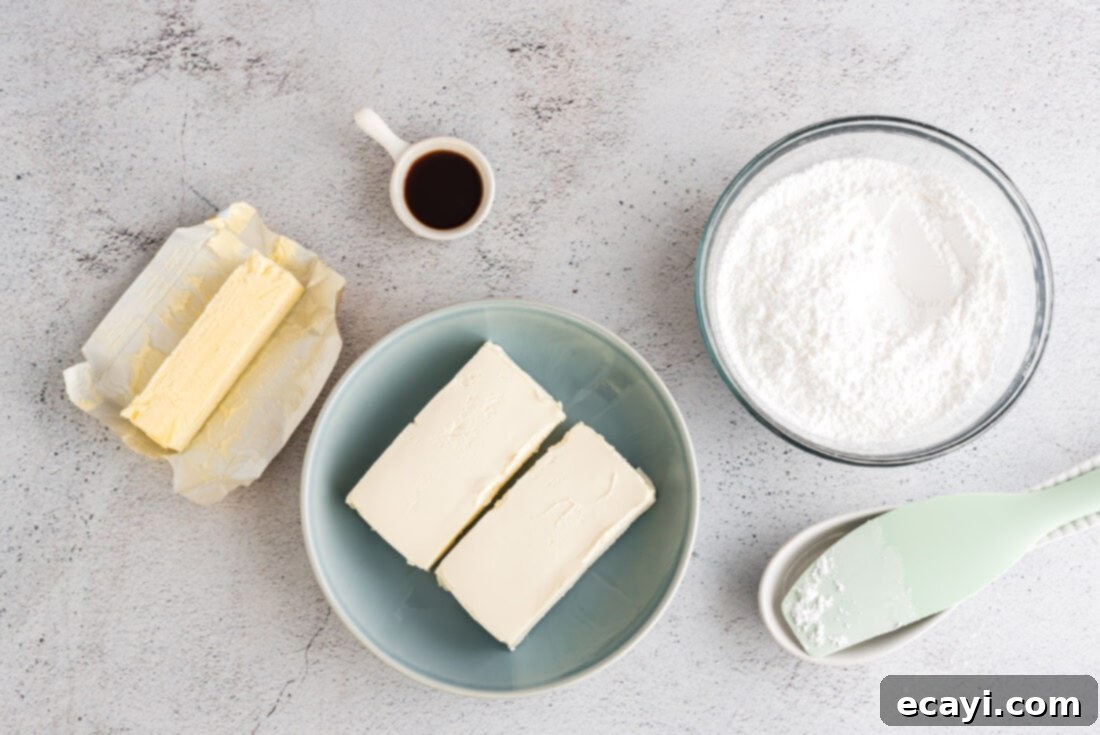
Expert Tips for Ingredients: Achieving the Perfect Consistency
Getting your ingredients just right is paramount for a smooth, stable, and utterly delicious cream cheese frosting. Here are some detailed insights and substitution suggestions to help you achieve perfection every time:
Cream Cheese and Butter: Temperature is Everything
The single most critical factor for lump-free, perfectly creamy frosting is the temperature of your cream cheese and butter. They absolutely *must* be softened to room temperature before you begin mixing. This doesn’t mean warm, and certainly not melted! Take them out of the refrigerator at least 30-60 minutes before you plan to make the frosting. If your kitchen is particularly cool, they might need longer. You want them to be pliable enough to easily indent with your finger, but still cool to the touch.
- Do NOT use the microwave to soften: This is a common mistake that can ruin your frosting. Microwaving creates uneven heating, often melting some parts of the butter and cream cheese while leaving others cold. This leads to a greasy, separated, or lumpy frosting that’s difficult to salvage. Patience is a virtue here!
- Why it matters: When butter and cream cheese are at the same, slightly pliable room temperature, they emulsify beautifully. This means they blend together to form a stable, airy, and creamy base that can then incorporate the powdered sugar smoothly without lumps or separation.
- Type of Cream Cheese: Always use full-fat block cream cheese for the best results. Whipped cream cheese contains too much air and moisture, and low-fat varieties have added stabilizers and water that can alter the texture and flavor.
Powdered Sugar: Sift for Silkiness
Powdered sugar (also known as confectioners’ sugar or icing sugar) is key for sweetness and thickening. It often clumps in the box, which can lead to a grainy frosting. To ensure a truly silky-smooth texture:
- Always Sift: Sifting your powdered sugar before adding it to the cream cheese and butter mixture is a non-negotiable step. Use a fine-mesh sieve to remove any lumps. This simple action guarantees a light, airy, and uniformly smooth frosting.
- Measurement: Measure after sifting for accuracy, or if measuring before, ensure it’s lightly spooned into the cup and leveled.
Vanilla Extract: Don’t Skimp on Quality
Vanilla is a crucial flavor enhancer in cream cheese frosting, adding warmth and depth that complements the tangy cream cheese beautifully.
- Pure Vanilla Extract: Opt for good quality pure vanilla extract over artificial vanilla flavoring. The difference in taste is noticeable and contributes significantly to the overall deliciousness of your homemade frosting.
- Vanilla Bean Paste: For a more intense vanilla flavor and a visually appealing speckled look, consider using vanilla bean paste as a substitution. Use it in a 1:1 ratio with vanilla extract.
Optional Flavor Enhancements (Not in original recipe, but good to add for SEO/word count)
- Pinch of Salt: A tiny pinch (about 1/8 to 1/4 teaspoon) of fine salt can actually enhance the flavors of the frosting, balancing the sweetness and tang. It won’t make it salty, but will make it taste “more like itself.”
- Lemon Zest or Juice: For an extra burst of fresh, bright flavor, especially if using on a lemon or berry cake, add a teaspoon of fresh lemon zest or a half teaspoon of fresh lemon juice. This can also help to cut through the richness slightly.
How to Make the Best Cream Cheese Frosting: A Step-by-Step Guide
These step-by-step photos and instructions are here to help you visualize how to make this recipe for the perfect cream cheese frosting. For your convenience, you can Jump to Recipe to get the printable version of this recipe, complete with precise measurements and comprehensive instructions at the bottom of this post.
- Prepare Your Ingredients: Soften Cream Cheese and Butter.
Begin by ensuring your full-fat cream cheese and unsalted butter are properly softened to room temperature. This is the foundation for a lump-free, smooth frosting. As mentioned earlier, take them out of the fridge at least 30-60 minutes prior to baking. They should yield slightly when pressed but still feel cool. Avoid the microwave to soften, as this can lead to an inconsistent texture and potentially ruin the consistency of your frosting. - Cream Together Butter and Cream Cheese Until Fluffy.
In the spacious bowl of a stand mixer fitted with the paddle attachment, or using a large mixing bowl with an electric hand mixer, combine the softened cream cheese and butter. Beat them together on medium speed for 2-3 minutes, scraping down the sides of the bowl occasionally. Your goal is to achieve a wonderfully creamy, light, and airy consistency. This step is crucial for incorporating air and ensuring all ingredients are thoroughly combined and smooth. The mixture should be homogenous, with no visible streaks of butter or cream cheese.

- Gradually Add Powdered Sugar.
With the mixer on low speed, begin to slowly add the sifted powdered sugar, one cup at a time. Adding it gradually prevents a cloud of sugar from erupting in your kitchen. Continue mixing on low until each addition of sugar is completely incorporated before adding the next. Once all the powdered sugar has been added, increase the mixer speed to medium-high and beat for another 1-2 minutes. This final whip will ensure the frosting is extra fluffy and smooth. Remember to scrape down the sides and bottom of the bowl periodically to ensure even mixing.

- Incorporate the Vanilla Extract.
Pour in the pure vanilla extract. Beat it into the frosting on medium speed for about 30 seconds until it is fully blended and fragrant. The vanilla adds that essential touch of warmth and sweetness that makes cream cheese frosting so irresistible.


- Chill Until Ready to Use for Optimal Consistency.
Once your frosting is perfectly smooth and creamy, it’s often best to chill it before use, especially if you plan to pipe it. Transfer the frosting to an airtight container and refrigerate for at least 20-30 minutes. This chilling period allows the frosting to firm up slightly, making it much easier to pipe with intricate designs or spread thickly without slipping. If it becomes too firm, let it sit at room temperature for a few minutes and give it a quick stir or whip before using.

Frequently Asked Questions & Expert Tips for Cream Cheese Frosting
Absolutely, cream cheese frosting freezes beautifully! This is a fantastic way to prepare ahead or store leftovers. To freeze, place the frosting in a large, heavy-duty freezer-safe ziptop bag, pressing out as much air as possible, or transfer it to an airtight container. It can be frozen for 2-3 months without significant loss of quality. When you’re ready to use it, simply thaw the frosting in the refrigerator overnight. Once thawed, allow it to come to room temperature for about 30-60 minutes. Before using, give it a thorough re-mix with a spoon or, for best results, a quick whip with an electric mixer. This will bring it back to its original creamy, velvety smooth consistency and re-incorporate any slight separation that might have occurred during freezing.
Proper storage is essential to maintain the freshness and safety of your homemade cream cheese frosting. Due to the dairy content (cream cheese and butter), it should always be stored in the refrigerator. Transfer the frosting to a large ziptop bag or an airtight container to prevent it from absorbing odors from other foods in your fridge. Stored correctly, your cream cheese frosting will stay fresh and delicious for up to 1 week. Remember to bring it back to room temperature and give it a quick whisk before using to restore its optimal texture.
If your cream cheese frosting turns out too thin for your liking, there are a few effective ways to thicken it:
- Add More Powdered Sugar: The simplest method is to gradually add an extra 2-3 tablespoons of sifted powdered sugar. Always start with less and add more if needed, beating well after each addition until you reach your desired consistency. Be mindful that this will also increase the sweetness.
- Chill It: Cream cheese frosting naturally thickens as it gets colder. If you plan on piping your frosting, or simply want a firmer consistency, I highly recommend covering it with a lid and placing it in the refrigerator for 20-30 minutes. This is an excellent alternative to adding more sugar, as it thickens the frosting without altering the sweetness level.
- Cornstarch (Use with Caution): If you prefer not to add more sweetness, you can thicken the frosting with cornstarch. However, use this method sparingly and with caution, as adding too much cornstarch can make the frosting gummy or pasty, which is the exact opposite of what you want! Slowly incorporate a tablespoon’s worth of cornstarch into the frosting, beating well, and adding more in small increments if needed, until you achieve your desired consistency.
If your frosting is too thick or stiff, especially after chilling, you can easily thin it out. Add a very small amount (half a teaspoon to a teaspoon) of milk, heavy cream, or even a splash of lemon juice (for added tang) at a time. Beat it into the frosting until you reach the desired consistency. Continue adding tiny amounts and mixing until perfect. Be careful not to add too much liquid at once, as it’s easier to add more than to correct an overly thin frosting.
Lumpy frosting is usually a result of improper ingredient temperatures. The key is to ensure both your cream cheese and butter are at perfect room temperature – soft but not melted. If they are too cold, they won’t cream together smoothly, leading to small lumps. Additionally, always sift your powdered sugar to remove any existing clumps before adding it to the mixture. Beat the cream cheese and butter well until truly creamy before incorporating the sugar to ensure a silky-smooth base.
Yes, you can absolutely color cream cheese frosting! Gel food coloring works best as it is highly concentrated and won’t thin out the frosting like liquid food coloring can. Add a tiny drop at a time and mix thoroughly until you achieve your desired shade. This is perfect for themed parties, holidays, or simply adding a vibrant touch to your desserts!
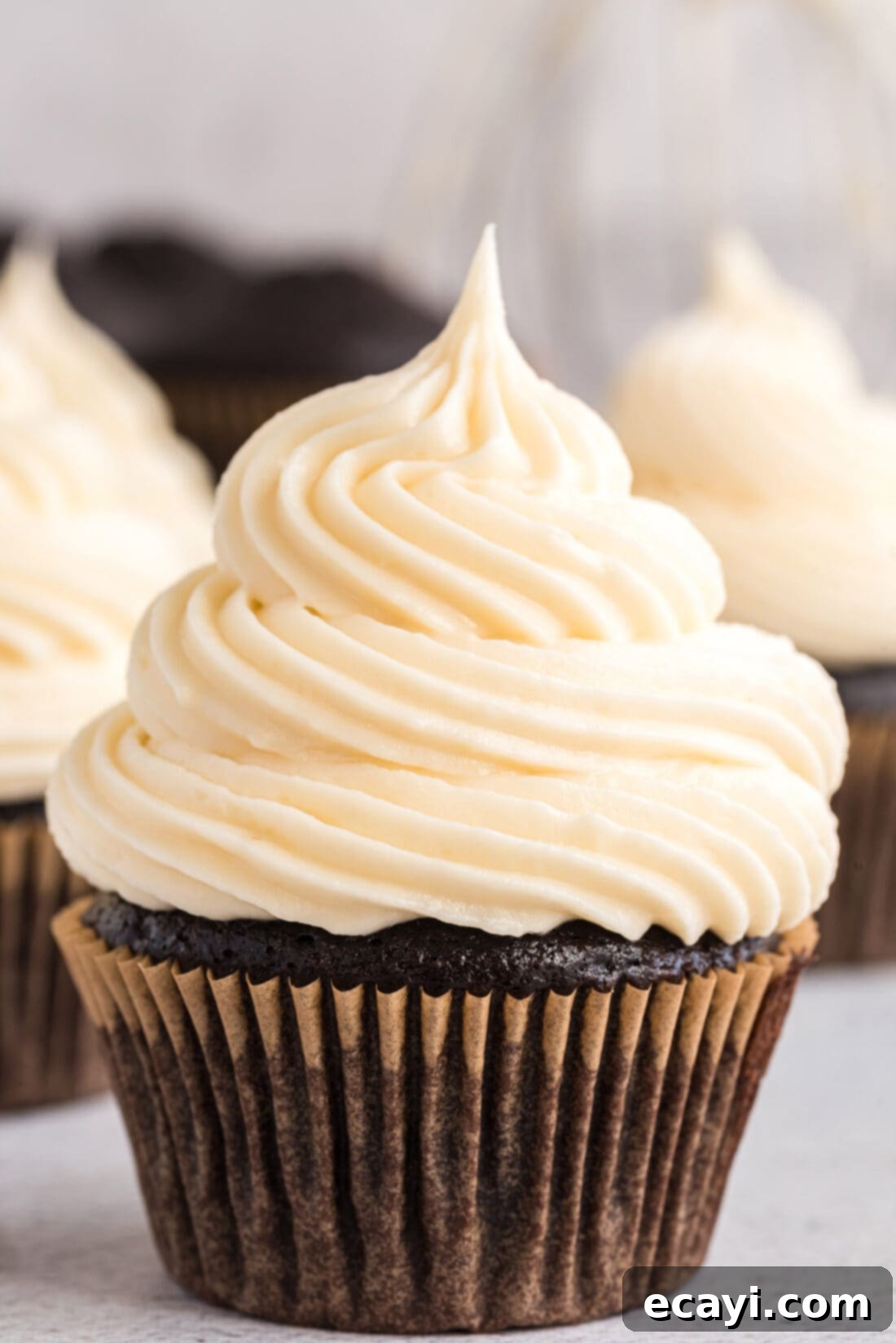
Creative & Delicious Serving Suggestions for Cream Cheese Frosting
The beauty of this easy cream cheese frosting lies not only in its delightful taste but also in its incredible versatility. While it’s the undisputed champion for classic desserts, don’t limit its potential! Truthfully, you can serve cream cheese frosting however your heart desires. Its creamy texture and balanced sweet-tangy flavor make it a fantastic companion to a surprising number of dishes.
- Classic Topping: Its most traditional role is as a luscious topping for beloved cakes like Carrot Cake, Red Velvet Cake, Pumpkin Cake, and Banana Cake. It’s also heavenly on cupcakes, brownies, and even cookies.
- Sweet Dip: Thinking outside the box? Use it as a sweet and tangy dip! It pairs wonderfully with fresh fruit like strawberries, apple slices, grapes, or pineapple chunks. Pretzel sticks or graham crackers also offer a delightful contrast of salty or crunchy textures.
- Filling for Pastries & Desserts: Spread it as a filling for whoopie pies, a layer in a trifle, or inside crepes and dessert quesadillas. It makes an excellent filling for Cinnamon Roll Cookies or as a delightful swirl in a sweet bread pudding.
- Breakfast Booster: A spoonful or dollop can elevate breakfast items! Think on top of warm pancakes, waffles, French toast, or even a toasted bagel for a truly indulgent start to your day.
- On Its Own: We’re not judging if you sneak a spoonful (or two!) of this irresistible frosting directly from the bowl. It’s that good!
This simple cream cheese frosting recipe truly holds its own alongside our other favorite easy yet delicious frosting recipes, such as our chocolate fudge frosting and buttercream frosting, proving that incredible confectionary toppings don’t have to be complicated.
Decadent Desserts Perfect for Cream Cheese Frosting
Cream cheese frosting is renowned for being the ultimate companion to a variety of beloved baked goods. Its rich, tangy-sweet profile beautifully complements spices, fruits, and chocolate, making it a star player in countless dessert recipes. Here are some of our top recommendations for where this luscious frosting truly shines:
- Spice Cake: The warm spices in a spice cake are perfectly balanced by the cool, tangy cream cheese frosting, creating a harmonious flavor experience.
- Carrot Cake: A quintessential pairing! The moist, spiced carrot cake simply isn’t complete without a generous layer of this creamy frosting.
- Pumpkin Cake: Ideal for autumn, a pumpkin cake becomes incredibly indulgent with the addition of velvety cream cheese frosting.
- Red Velvet Cake: The subtle cocoa and vibrant color of red velvet cake are traditionally paired with, and elevated by, classic cream cheese frosting.
- Easy Fruit Pizza: Use it as the sweet, creamy base for a vibrant fruit pizza, offering a wonderful contrast to fresh berries and kiwi.
- Banana Cupcakes: The natural sweetness of banana cupcakes finds its perfect match in this rich, tangy frosting.
- Cinnamon Roll Cookies: Frost these delightful cookies with cream cheese frosting to replicate the experience of biting into a warm, gooey cinnamon roll.
- Blueberry Muffins: Transform simple muffins into a dessert-like treat with a dollop of frosting.
- Gingerbread Cookies: A festive and delicious topping for classic gingerbread.
I love to bake and cook and share my kitchen experience with all of you! Remembering to come back each day can be tough, that’s why I offer a convenient newsletter every time a new recipe posts. Simply subscribe and start receiving your free daily recipes!
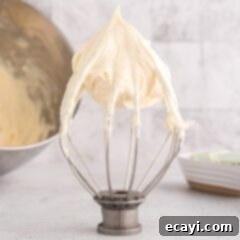
Cream Cheese Frosting
IMPORTANT – There are often Frequently Asked Questions within the blog post that you may find helpful. Simply scroll back up to read them!
Print It
Pin It
Rate It
Save ItSaved!
Ingredients
- 16 ounces cream cheese 2 – 8 oz blocks. Softened to room temperature
- ½ cup unsalted butter 1 stick, softened to room temperature
- 2 cups powdered sugar sifted (confectioners’ sugar)
- 1 Tablespoon pure vanilla extract
Equipment You’ll Need
-
Electric hand mixer or stand mixer with paddle attachment
-
Mixing bowl(s)
-
Fine-mesh sieve
Before You Begin: Important Notes for Success
- This recipe is designed to yield approximately 3 cups of rich, creamy frosting. Each serving is considered to be about 3 tablespoons. This quantity is generally sufficient to generously frost the top and sides of a standard 13×9 inch cake, or to beautifully frost around 16 regular-sized cupcakes. The actual number of cupcakes frosted can vary depending on how thickly you apply the frosting or your piping technique.
- Always start with softened ingredients! For the silkiest, lump-free cream cheese frosting, ensure both your full-fat cream cheese and unsalted butter are softened to room temperature. This means taking them out of the refrigerator at least 30-60 minutes before you begin mixing. Crucially, do NOT use the microwave to speed up this process, as uneven heating will lead to a grainy or lumpy frosting that can be difficult to fix.
- Sift your powdered sugar: To guarantee a truly smooth and velvety texture, always sift your powdered sugar before adding it to the creamed butter and cream cheese. This removes any lumps and ensures a light consistency.
- Proper Storage: Due to its dairy content, homemade cream cheese frosting must be refrigerated. Store it in a large ziptop bag or an airtight container in the refrigerator for up to 1 week. If you need to store it longer, it freezes wonderfully (see FAQ for details).
- Chilling for Piping: Cream cheese frosting tends to be softer than buttercream at room temperature. If you plan on piping intricate designs or want a firmer frosting that holds its shape better, I highly recommend covering it and setting it in the refrigerator for 20-30 minutes before piping. This helps it firm up without altering its flavor or requiring more sugar. If it becomes too firm after chilling, let it sit at room temperature for a few minutes and give it a quick stir.
Instructions
-
Ensure your full-fat cream cheese and unsalted butter are softened to room temperature, but not warm or melted.
-
In the bowl of a stand mixer (or using an electric hand mixer), beat the softened cream cheese and butter together on medium speed until the mixture is completely creamy, light, and airy (about 2-3 minutes). Scrape down the sides of the bowl as needed.
-
Slowly add the sifted powdered sugar, one cup at a time, on low speed until fully combined. Once all sugar is added, beat on medium-high for another 1-2 minutes until fluffy.
-
Beat in the pure vanilla extract until fully incorporated and fragrant.
-
For optimal consistency, especially for piping, keep the frosting refrigerated in an airtight container until you are ready to use it. If it becomes too firm, let it sit at room temperature briefly and stir before frosting.
Nutrition Information
The recipes on this blog are tested with a conventional gas oven and gas stovetop. It’s important to note that some ovens, especially as they age, can cook and bake inconsistently. Using an inexpensive oven thermometer can assure you that your oven is truly heating to the proper temperature. If you use a toaster oven or countertop oven, please keep in mind that they may not distribute heat the same as a conventional full sized oven and you may need to adjust your cooking/baking times. In the case of recipes made with a pressure cooker, air fryer, slow cooker, or other appliance, a link to the appliances we use is listed within each respective recipe. For baking recipes where measurements are given by weight, please note that results may not be the same if cups are used instead, and we can’t guarantee success with that method.
